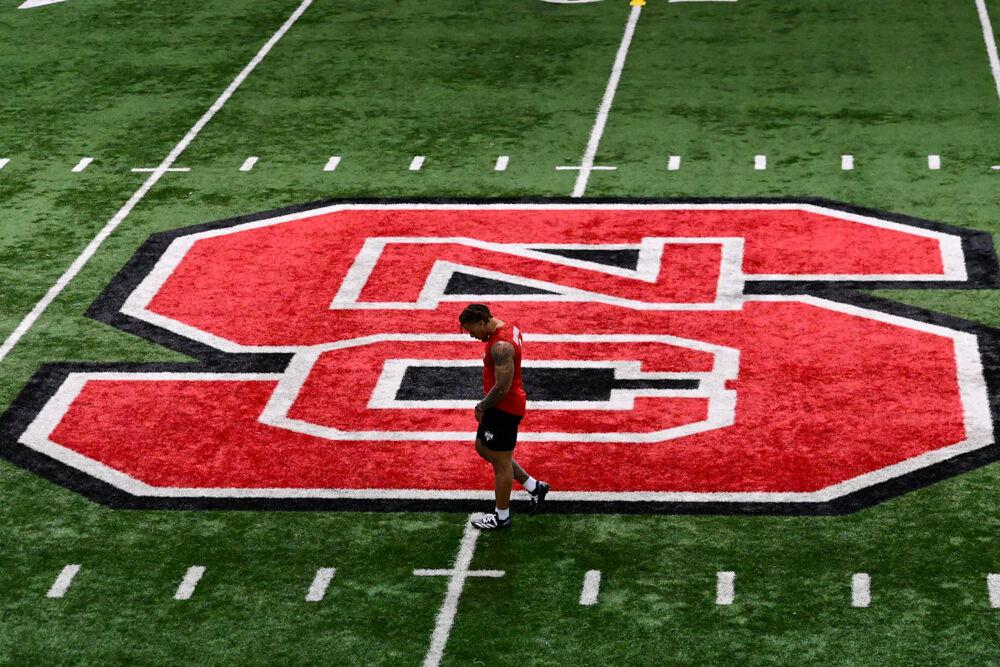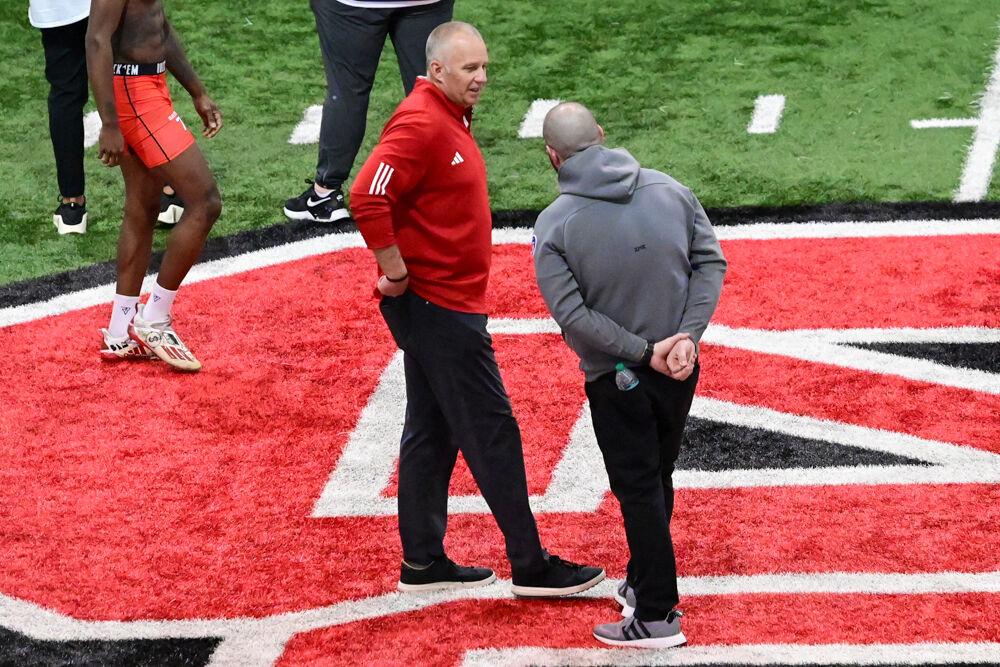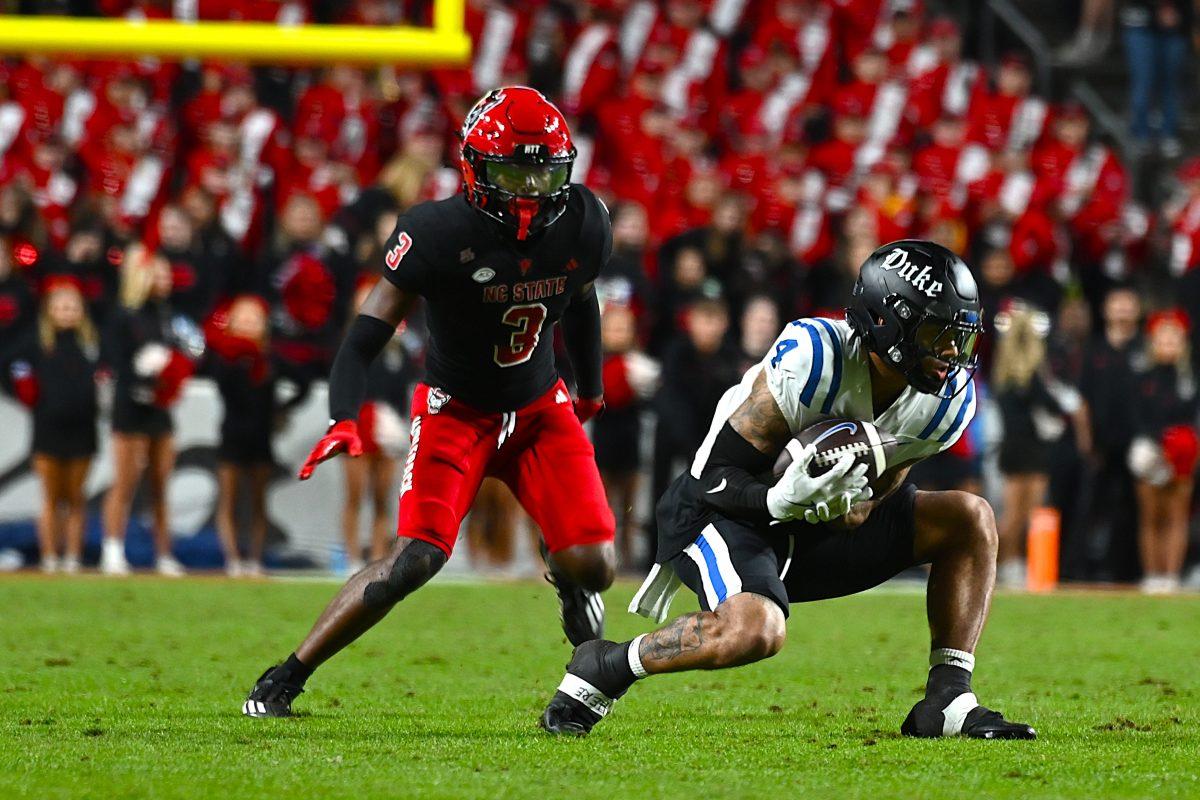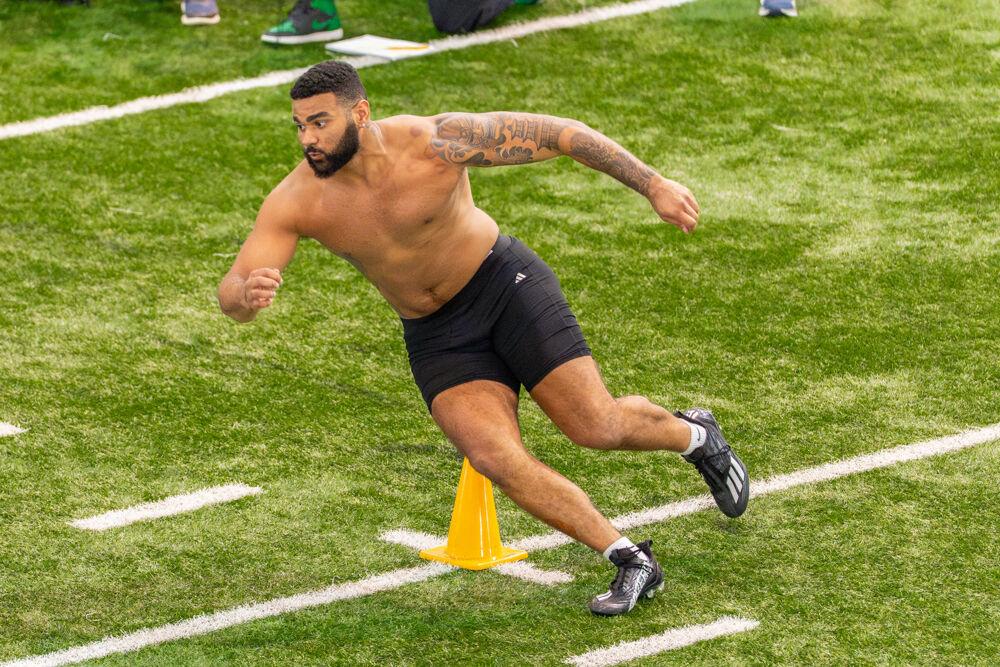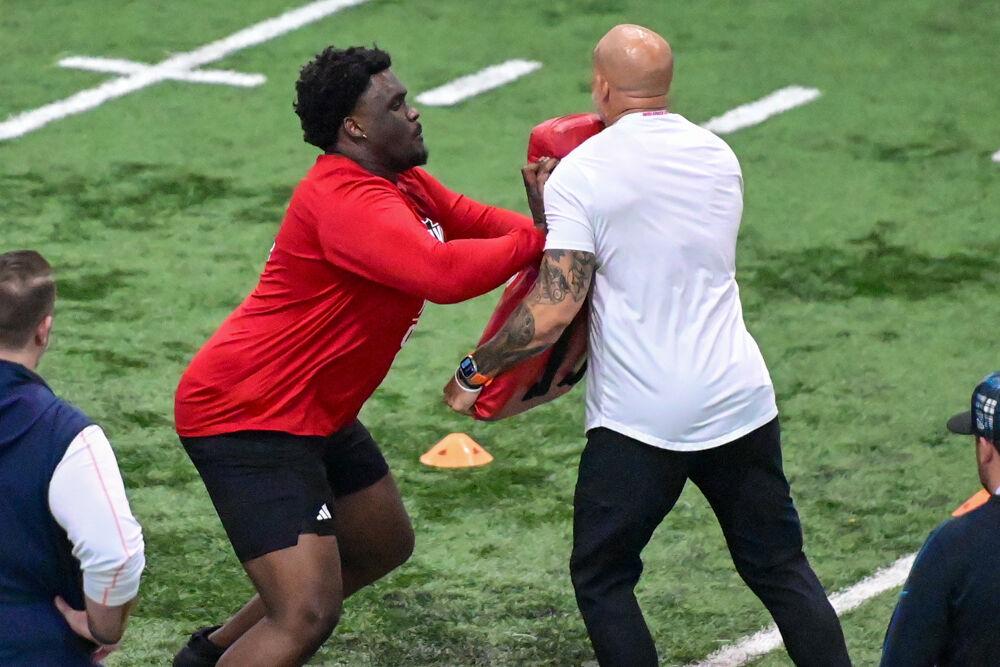The NC State football team jumped out to a commanding 4-0 start to the season, unloading on its opponents in the process. After that, the Pack entered ACC competition with high hopes against middle-conference teams, only to be squandered in the form of two straight losses. What has gone wrong?
The offense has been the biggest issue in the two losses. After outscoring opponents 185-48 in the first four games of the season (an average of 46.25 points per game), the Wolfpack has put up just 13 points in losing efforts against Louisville and Virginia Tech. This lack of production begins and ends with the running game.
NC State’s offense is designed around its power run game. With the dismissal of Shadrach Thornton two weeks ago, the offense lacks its premier power back, leaving junior running back Matt Dayes to shoulder the load with the talented but young freshman running back Reggie Gallaspy II as his primary backup.
The running backs and offensive line have struggled against the much more formidable defenses of the ACC. In the first four games, the Pack carried the ball 199 times for 1,036 yards and 20 touchdowns, good for averages of 5.2 yards per carry, 259 yards per game and five touchdowns per game.
In the previous two games, State has rushed 70 times for 202 yards and one touchdown for averages of 2.9 yards per carry and 101 yards per game. To put that into perspective, the Pack totaled 330 yards and seven touchdowns on the ground against South Alabama alone. While State garnered a respectable 157 yards against Virginia Tech and appeared to be getting back on the right track, this offense will need more if it wants to consistently put points on the board.
Much like the running game, the passing attack has also struggled in the past two games. Senior quarterback Jacoby Brissett has struggled to throw the ball down the field, as the longest passing play of the game went 24 yards to sophomore fullback Jaylen Samuels, most of which came after the catch.
Brissett started off the season strong, passing for 196 yards and two touchdowns and throwing just two incompletions throughout the entire game in the season opener against Troy. After the first four games, he had passed for 809 yards and six touchdowns while completing 77.9 percent of his passes.
That efficiency has seemingly dwindled away in the last two games, as he combined for 296 yards, two touchdowns and one interception while completing merely 52.8 percent of his passes. The interception late in the fourth quarter snapped his streak of 241 passes without throwing an interception. Who knows, though—maybe now that the streak is over Brissett might start being less trigger-shy and start going for the big plays down the field. NC State will certainly need him to, as it will likely need more out of the passing game with the running game struggling for the time being.
On the defensive side, the run defense has been solid, if you take away the big runs. Against Louisville, freshman quarterback Lamar Jackson ran for a 68-yard touchdown and against the Hokies, freshman running back Travon McMillian ran for a 59-yard touchdown. Take away those runs and those teams will have combined to average only 3.5 yards per rush.
The problem for the defense has been defending the pass. While Jackson and Virginia Tech backup quarterback Brenden Motley combined for just 261 yards through the air and had completed just 43.6 percent of their passes, they were able to make the key passes when it mattered.
For example, Louisville converted on 6-of-10 third down conversions, a lot of those coming on slant patterns that the NC State defense was unable to figure out until the second half. Motley threw three touchdown passes to Isaiah Ford, who is talented but shouldn’t be able to tear up the NC State defense in the red zone like he did.
However, from a yardage and points standpoint, the NC State defense has been decent. It needs to work on minimizing the big plays because this was likely the difference in the last two games.
If NC State wants to remain competitive, it will start with the offense improving. Scoring 13 points per game will not win the team many games of collegiate football.


